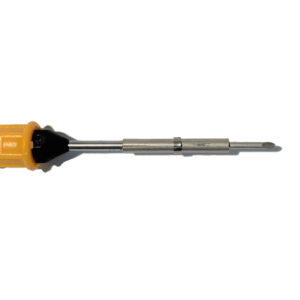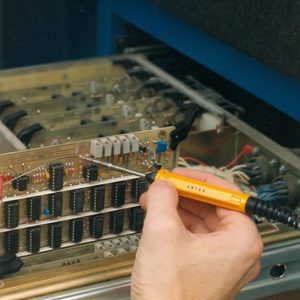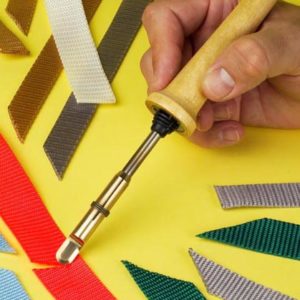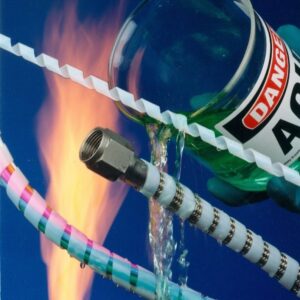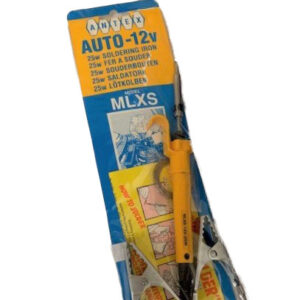
In a car, the engine is normally running when anyone’s in it, so the alternator is producing most of the voltage to run electrical equipment in it. In a boat, however, electrical appliances are more likely to require power when the boat’s anchored with its engine off. For this reason, the electrical wiring within a boat needs to be significantly different than that of an automobile or other land-based vehicle.
One prime difference is the amount of copper used in boat wiring for any given size of gauge. More copper reduces electrical resistance, enabling greater amperage for wiring regardless of its gauge. As an example, a 14-gauge marine-grade cable will have more copper in it than that of a 14-gauge cable for an automobile. The variance may differ, but automotive wiring tends to have only 85-90 percent of the copper as those used in boats.
But one of the other key differences between automotive and marine grade wiring involves the pressures marine wiring must withstand. Not only does wiring need to be resistant to oil and fuel, it requires greater abrasion resistance, along with a better thermal rating. Using spiral wrap for wires in boats is an easy solution to help protect boat wiring or cabling, during boat manufacturing or maintenance and while in operation.
Using Spiral Wrap for Wires
Spiral wrap for wires isn’t a new thing. Wire or cable wrapping protects and helps them resist abrasion, with certain materials offering advantages when exposed to harsh chemicals (including sodium in seawater), heat or sunlight.
The benefits of using spiral wrap for wires include:
• Allows easy access to wires for maintenance.
• Can be removed without difficulty and reused.
• Comes in assorted outside diameters, pitch distance configurations and wall thicknesses.
• Different spiral wrap materials better withstand corrosion, flames, high heat environments and sunlight.
• Ease in which it can be installed without any special tools.
• Helps organize wire bundles.
• Offers additional protection for wiring abrasion.
• Provides more flexibility for bundles of wires.
Spiral Wrap for Wires in Boats & Other Watercraft
The wiring in boats is more complex than in land-based vehicles, and a brand-new boat is just as likely to experience electrical issues as a used one. One of the best means for protecting wiring in boats and other watercraft involves the use of spiral wrap, which can be installed during manufacturing or maintenance. Spiral wrap can also be made from a variety of materials, including PTFE (Polytetrafluoroethylene), Nylon (polyamides) and Polyethylene. Each material offers benefits, depending on the specific application.
PTFE Spiral Wrap
Chemically inert and non-flammable, PTFE has the most extensive operating range when it comes to temperature, and can be utilized for temperatures between -328°F to 500°F (-200°C to 260°C). Being extremely heat-resistant, PTFE spiral wrap works well in areas where high heat could degrade the wrapping, such as in the galley, the hull for boats with inboard engines or even outside the hull for boats with outboard engines. Its low friction coefficient and good mechanical properties make PTFE spiral wrap a good way to protect wires from abrasion in these areas of a boat.
Nylon Spiral Wrap
Nylon spiral wrap extinguishes itself when exposed to open flames, while not producing any irritating or toxic byproducts in the process. With operating temperatures from -40 °F to 250 °F (-40 °C to 121°C), nylon spiral wrap also works well in places where fire and high heat are issues, such as in the galley or near the engine. Nylon is highly resistant to abrasion, lightweight, and recommended for use in enclosed environments, while also maintaining flexibility in wire bundles. Nylon spiral wrap can also be made resistant to UV radiation, making it perfect for wiring on a boat’s deck or other areas exposed to outdoor conditions, as the spiral wrap won’t break down when exposed to sunlight.
Polyethylene Spiral Wrap
The most cost-effective material for spiral wrapping wires is Polyethylene, which has an operating temperature range between -76°F to 190°F-(-60°C to 88°C). The material can withstand high temperatures and harsh chemicals, along with having significant resistance to abrasion. Polyethylene spiral wrap also offers resistance to acidic, alkaline and other solutions, including seawater. This means that Polyethylene spiral wrap can keep protecting wires from abrasion, even in adverse conditions found on boats. Providing plenty of flexibility, spiral wrap for wires made from Polyethylene can be used in electrical panels and anywhere where there are wire bundles. It can also be made UV resistant, capable of working in indoor and outdoor environments throughout a boat without breaking down due to exposure to sunlight. Polyethylene spiral wrap for wires can also be made fire-resistant and self-extinguishing, though this limits its temperature range somewhat, from -4°F to 176°F-(-20°C to 80°C).
Use of Spiral Wrap During Boat Manufacturing or Maintenance
In modern boat manufacturing, robotic or automated machinery are used to make boats. Constructing or maintaining a boat requires the use of electrical or pneumatic equipment, with spiral wrap used for protecting or organizing wires, cable or hoses used in boat manufacturing and maintenance.
Most boats are built or repaired using plastics reinforced with fiberglass. Portions of a boat are molded in pieces, then put together to create the final product. Constructing and finishing a boat requires a great deal of electrical equipment that’s needed to spray, saw, grind, drill and buff surfaces. Physical hazards associated with boat manufacturing or maintenance also involve the use of flammable liquids and corrosive solutions, so utilizing spiral wrap that can withstand these conditions allows them to continue protecting wire bundles from abrasion.
For both recreational and commercial aluminum boats, robots are used for bending hull sections as well as for welding. Aluminum boats are often built modularly, increasingly using robotic welders or robotic arms in the process. Robots are also used in the US marine manufacturing industry to produce jetboats, outboard motors, propellers and marine accessories. Some collaborative robots that work alongside human workers are being applied to fiberglass boat manufacturing for sanding and polishing.
Automated cutting machines for CNC (Computerized Numerical Control) machining is now used for cutting balsa, fabric, plywood and other boat material. In modern boat factories, robots perform trimming of decks and hulls after coming out of the mold, while also used for cutting dash panels, jet pumps and other hardware. Robots can also be utilized for applying gelcoat to decks and hulls, while robotic welding has been used to fabricate small boating parts.
For boat factories or repair shops, spiral wrap protects the bundles of wires or pneumatic hoses from damage due to chafing and abrasion. Using spiral wrap also protects boat mechanics and factory workers from physical hazards like tripping, while protecting wire bundles during production or maintenance activities.
M.M. Newman Corporation’s Heli-Tube® Spiral Wrap
M. M. Newman Corporation’s Heli-Tube® spiral wrap can be customized to different diameters, pitches and wall thicknesses, while lengths can also be cut to customer specifications. Depending on the material, the company’s spiral wrap for wires comes in a variety of colors that also enable easy identification of bundles. Capable of wrapping around cabling, hoses, tubing and wiring, it makes routing or rerouting bundles simple. Additionally, M.M. Newman Corporation makes a Heli-Tube® spiral wrap for wires that are perfect for marine environments. Capable of resisting abrasion, Polyethylene cable wrap also resists detergents, direct sunlight, oils and fuel. This allows it to tolerate environments that expose the wrap to saltwater or sea air. For more information about how our Heli-Tube® spiral wrap works in marine environments and on boats, contact us today.


